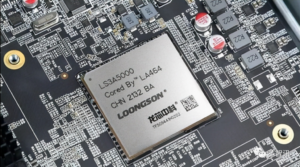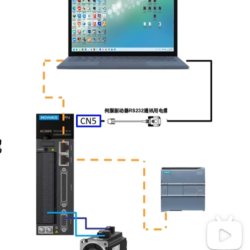After
a four-year legal battle, on February 2023 Beijing IP Court determined that
Loongson Technology’s 3A5000 processor did not infringe on the MIPS
Technologies’ chip architecture IP, according to the court’s ruling.
“Since 2011, LoongSon has signed several technology license agreements with MIPS, and the license is limited to a certain version of the MIPS architecture or some of its units, and cannot be modified, added or subtracted, or used without authorization. After We obtained the exclusive right to operate MIPS technology in China, We found that LoongSon has not performed in accordance with the agreement for many years, including not paying the technology licensing rights to our company in full and on time in accordance with the agreement. If there is a breach of contract, it should be audited according to the contract. Our company started to request LoongSon to conduct a review in 2020 according to the contract, and it is regrettable that LoongSon failed to cooperate to resolve the dispute” (https://www.cipunited.com/cn/news/433.html).
LoongSon immediately replied that the above remarks were malicious slander and defamation of LoongSon. It had taken legal action to defend its rights. On the same day, Cipunited requested LoongSon to release the complete contents of manuals of its so-called independently developed intellectual property “LoongISA” and “LoongArch” immediately and publish the list of “LoongArch” R&D personnel in due time to show the high degree of openness and impartiality of LoongSon. LoongSon did not reply.
The Focus of Dispute
The focus of dispute between Cipunited and LoongSon can be simply described as: “Does LoongSon continue to use the MIPS instruction set for which
Cipunited has exclusive rights?” According to Cipunited, LoongSon still continues to use the MIPS instruction set in its CPU designs, but falsely claims that it is an independently developed instruction set, thereby evading royalties, deceiving the world and damaging the goodwill of Cipunited. LoongSon denies the argument of Cipunited and believes that Cipunited is defaming its business.CPU IP
Classification of CPUs
This is the classification from the IP existence form of CPU.
Soft cores are submitted to the user in HDL text form, which are synthesized into gate-level netlist circuits after RTL-level design optimization and functional verification, but do not contain any specific physical information. The user can make various modifications,which is very flexible.
The hard core is a physical design based on the semi-conductor process, where the circuit structure, technology layout and production process have been determined and physically verified to ensure various physical performance indicators, and is provided to the user in the form of a circuit mask layout and a full set of process files, which is commonly known as a “ready-to-use” full set of technology.
A solid core is a form between a soft core and a hard core . A solid core is based on a soft core, mapped to a standard component library, and generally provided to the user in the form of a gate-level circuit netting.
The legal significance of this classification is that hard cores are strictly protected as the IC layout, while the protection of soft and solid cores is more complex and varies from country to country.
(2) CISC and RISC
This is a CPU classification based on the complexity of the Instruction Set Architecture (ISA) supported by the CPU.
CISC (Complex Instruction Set CPU) is characterized by different instruction lengths and continuous backward compatible protection, as well as the execution efficiency of its instruction set. RISC (Reduced Instruction Set CPU), on the contrary, is characterized by the same instruction set length, simple design, and high chip area rate.
This classification is more meaningful in the technical route.
(3) Open source and closed source
This is a classification of CPU based on the version status of the CPU instruction set (ISA). A CPU is a closed-source CPU if its instruction set is closed-source and requires an authorized party to use it, and vice versa for an open-source CPU. Typical closed-source CPUs are: x86, ARM, POWER, etc., and typical open-source CPUs are: OpenRISC, RISC-V, Open POWER, etc.
The significance of this classification lies in the different forms of copyright of instruction sets, which determine whether they can be used for free, and also the specific scope and way of authorization of each.
CPU IP Protection
Type of rights protection
At present, the types of protection rights for integrated circuits are: layout design right, patent right and copyright. These rights are applicable to different forms of integrated circuit design, CPU is a typical and general integrated circuit, which is certainly protected by the above rights.
If the integrated circuit is in the form of a schematic diagram, it may be protected by copyright; secondly, if the integrated circuit is in the form of hardware description language, it may be protected by copyright and patent laws; finally, if the integrated circuit design is in the form of a layout, it is protected by the exclusive right of layout design. It is important to note that integrated circuits may be protected by a combination of these rights.
The question is: which form of rights should protect the integrated circuit design that uses hardware description language (HDL, Hareware Description Language) as the carrier ? It is obviously inappropriate to use copyright protection alone, because it is essentially different from literary and artistic works in many cases. It is also necessary to rethink whether the design of hardware description language itself can be protected by software copyright, because software design is fundamentally different from hardware design, the former is pure logic design at application level, while the latter is state machine design based on timing circuit.
The specific form of rights protection for hardware description language design IC design depends on its specific technical status. If the HDL language source code design does not reach the standard of soft core, it can be protected by copyright because it is not essentially different from general written works at this time. If the HDL language source code design meets the standard of soft core, then both patent or software copyright protection can be considered. If the HDL source code design meets the standard of solid core or even hard core, it can be protected by patents and exclusive rights of layout design. If the HDL language source code design only embodies algorithmic logic and has nothing to do with specific gate circuits and hardware timing, then it is actually a standard software copyright protection object.
Software protection and hardware protection
CPU itself can also be divided into “software part” and “hardware part”. The “hardware part” refers to the circuit part, i.e., the circuit carrier of the chip. That is, the square-shaped black or gray circuit we usually see, professionally known as the IP Core. The “software part” refers to the instruction set (ISA) supported by the CPU, i.e., the instruction set that this CPU can recognize and execute.
The relationship between IP Core and ISA is similar to the relationship between the “brain” of a person who only knows English and the “English words in the brain”. IP Core is equivalent to “brain” and ISA is equivalent to “English words”. ISA can be used to develop a variety of software (all kinds of operating systems, games, office software, etc.).The long-term use of ISA will form an “ecology”.This phenomenon is similar to the long-term use of English. If English is used for a long time, the literary, scientific, artistic, and other works expressed in English will be richer, and the more people who can speak English will be able to form a good cultural ecology.
Usually, to design a new CPU, the IP Core can be designed by ourselves or we can buy the existing mature one and modify it. As for the ISA supported by the CPU, there are two options: one is to use the existing ISA (open source free, closed source to pay royalties), and the other is to self-select the transfer ISA. As previously mentioned, self-designed new ISA, the biggest problem is the lack of software ecological support.
Therefore, to design new CPUs, latecomer manufacturers usually design their own IP Cores (to save a royalty), but buy instruction set licenses from established CPU manufacturers. The following table lists specific information about the current major domestic CPU design manufacturers in the Mainland who buy instruction set licenses from US or UK CPU design companies:
Note: ARM’s licensing model is: the instruction set is expensive, the core is cheap, you can modify the core but not the instruction set; MIPS is the opposite: the instruction set is cheap, the core is expensive, you can modify the instruction set but not the core, MIPS’s licensing method has caused the consequences of “fragmentation” of the software ecology.
Under China copyright law, the protection of IP Core belongs to “hardware protection” so as to protect the circuit design, and the protection of ISA belongs to “software protection” so as to protect the software ecology.
Analysis of MIPS IPS Dispute
Legal determination of the MIPS instruction set
MIPS (Million Instructions Per Second) is a word with multiple meanings, which first refers to a CPU instruction set, and the name of the company that designed this instruction set is also called MIPS. MIPS was born out of a research project by a team led by John LeRoy Hennessy at Stanford University, and Hennessy left Stanford University in 1984 to found MIPS. In 1992, SGI acquired MIPS Computer, Inc. In 1998, MIPS separated from SGI and became MIPS Corporation. Since MIPS designed CPUs mainly for routers, set-top boxes and other fields, making it not as easy for general consumers to pay attention to as intel. Later, the market strategy mistake led to shrinking share, but its MIPS instruction set ecology is quite mature.
Notes on Cipunited and LoongSon
Cipunited was incorporated in Shanghai on December 26, 2018, and its chairman, Wei-Ling He, was one of the founding engineering team members of MIPS in Silicon Valley back then.
Cipunited has obtained from Wave Computing the exclusive commercial operation rights of MIPS Technology in China (including over 30 MIPS customers) in early 2019, and was granted a permanent CPU core worldwide patent licenses, including infrastructure, MIPS instruction set architecture compatible CPU core licenses and core sublicenses, over 1000+ MIPS related patents, optimization of existing CPU core performance in the Fab process, development of new CPU cores and derivative cores, and support for all advanced technology activities and international projects for domestic and international customers.To put simply, all companies in China using MIPS instruction set shall pay royalties to
Cipunited, and all patent licensing contracts and cooperation with MIPS CPUs signed by companies in China shall be succeeded by Cipunited.LoongSon has been using MIPS instruction set since 2001 when it started to design CPUs, and was sued by MIPS during that period because it was not authorized by MIPS, and later paid royalties for settlement. Since then, until 2019, its “LongSon” series CPUs (LoongSon) have been using the MIPS instruction set, and in April this year, LoongSon announced to the public that “it has abandoned the MIPS instruction set and used the self-developed LoongArch instruction set to design the LoongSon 3A5000 processor (CPU). 3A5000 processor (CPU), and officially licensed it to the public. In April this year, LoongSon announced that it had abandoned the MIPS instruction set and used its own LoongArch instruction set to design the LoongSon 3A5000 processor (CPU), which was officially licensed to the public.
Further,
Cipunited points out that LoongSon has been in arrears in paying royalties since 2011 and demands that it pay back the royalties and demands that LoongSon disclose information related to the new processor (industry practice must be disclosed unless this processor is not intended for commercial use and is not intended for technical personnel to learn how to use it), while Longcore denies these facts, but no further legal action has been seen from either side.It is a typical case involving high technology, but the legal issue is actually very simple, involving two issues. The first is whether LoongSon is in breach of contract (patent licensing contract) or whether Cipunited damaged LoongSon’s reputation, and the second is whether LoongSon has paid royalties from 2011 to 2021.
The key to solve the first issue is to clarify whether the “LoongArch instruction set” claimed by LoongSon is the MIPS instruction set (including modifications or extensions based on the MIPS instruction set) or not. If it is, then legally, Longcore constitutes a serious breach of contract and has to pay liquidated damages to
Cipunited, if not, then Cipunited constitutes a goodwill infringement and needs to make public apologies and eliminate the impact.In terms of evidence, We only needs to check the manual of LoongArch instruction set to find out the facts. Accordingly, Cipunited‘s first request to release the complete contents of the LoongISA and LoongArch manuals to immediately is reasonable. Further, even if LoongSon refuses to disclose the aforementioned information, once Cipunited files an intellectual property lawsuit against it, it can request LoongSon to present its CPU samples including the latest instruction set for comparison. If LoongSon refuses to provide such CPUs for comparison, then according to Article 24 of the Provisions of the Supreme People’s Court on Evidence in Intellectual Property Civil Proceedings, “If the party bearing the burden of proof applies in writing to the people’s court to order the other party in control of the evidence to submit the evidence, the people’s court shall make a ruling and order it to do so if the grounds for the application are established.” and Article 25, “The party bearing the burden of proof shall apply in writing to the people’s court to order the other party in control of the evidence to submit the evidence. The People’s Court may presume that the other party’s claim on the matter to which the evidence relates is established if the party refuses to submit, submits false evidence, destroys evidence or commits other acts that make the evidence unusable without justifiable reasons”, LoongSon must provide CPU as proof, or it will face unfavorable presumtion.
If LoongSon handed over the CPU which claimed to use its own instruction set, then any computer undergraduate can write an assembly program to test what instruction set is used in this CPU, so that it is easy to judge whether LoongSon continues to use the MIPS instruction set, and if it does, it constitutes a serious breach of contract.
As for the second issue, it is very simple: LoongSon does not deny that it has been using the MIPS instruction set until 2020, so it should pay back the royalties for the period from 2011 to 2020 to
Cipunited.We will continue to follow up the case.



